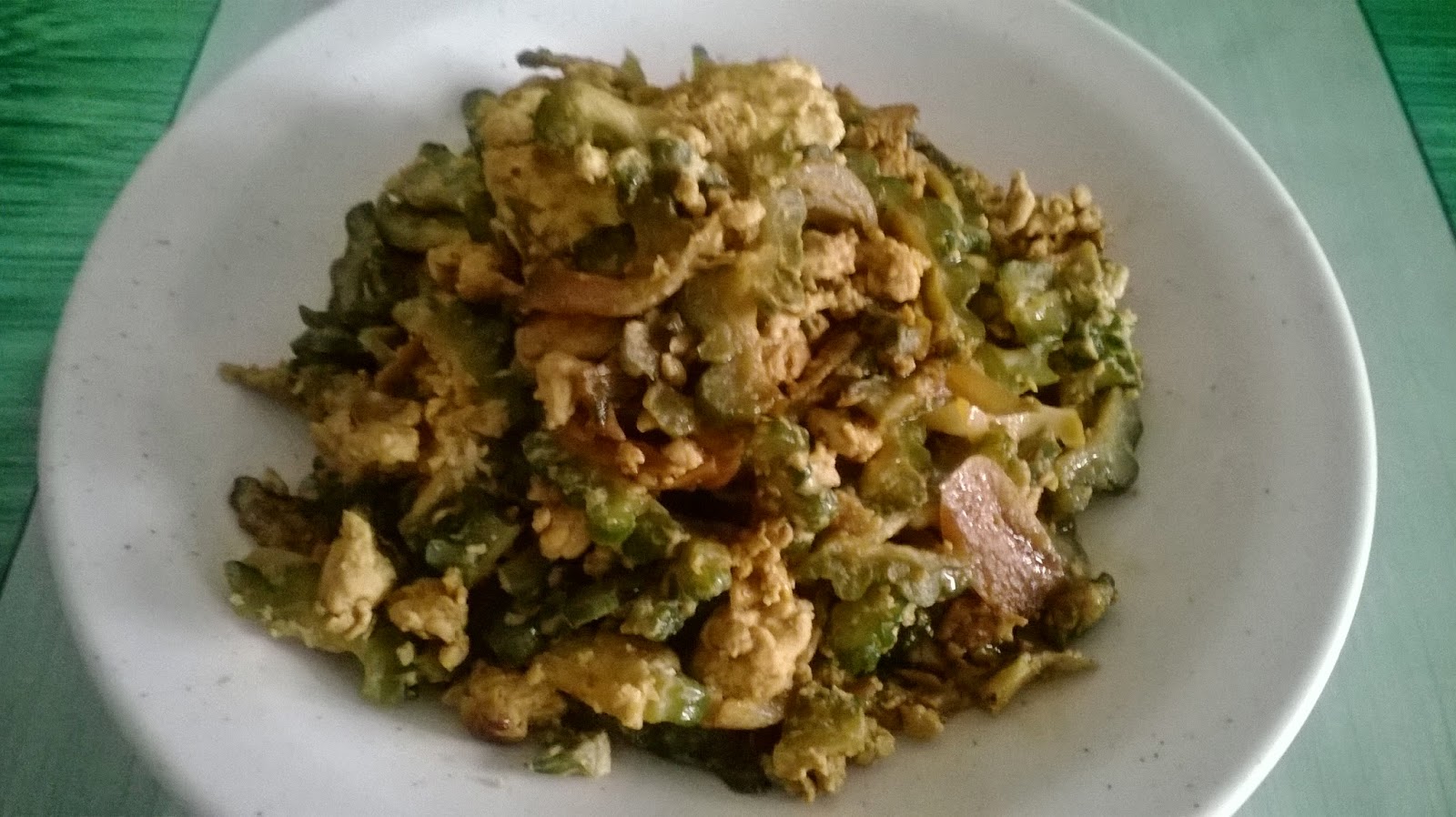I do understand that not all of us can tolerate to eat "Ampalaya" bravely because of its bitterness. But finding helpful alternatives in order to eat them enjoyingly healthy is what I am after for, for you and me.
The way I cook "Ampalaya" comes with a secret. In order to take at least the bitterness away and just leave a small taste out from its bitterness, it is all in the way on how it is being sliced. My secret - sliced them super thin so that it will be super friendly.
I call my recipe though there are some who know how to cook the way I made it, but still, I will name it as "Friendly Ginisang Ampalaya". Why friendly? I can take the bitterness out from it, but expect that you will taste just a small portion of its bitter taste without discarding its liquid content. Frankly, one can't really eradicate its bitter taste, but at least, in the way how I cook them, just a little bitterness you will taste as you eat them.
Ingredients:
2 pieces of ampalaya, washed, cut and thinly sliced2 tbsp iodized salt
3 pieces eggs, beaten
1 small onion, sliced
1 small garlic, sliced
4 tbsp cooking oil
4 tbsp soy sauce
Procedure:
1. Heat the pan and place the cooking oil.
2. Sautee the onion and garlic
3. Add the "Ampalaya" and mixed well the ingredients
4. Put-in salt and soy sauce to taste and mix
5. Pour the beaten eggs over the "Ampalaya", let the eggs cook partially and mix with the other ingredients
6. Serve it hot.
Reminders: When you mix all the ingredients and you found out that the taste is not that impressive, you can add tablespoons of soy sauce and salt. It is better to get what your taste want. But be sure not to over pour them (soy sauce and salt) so that your "Friendly Ginisang Ampalaya" will not end up more salty.
When cooking, it is essential that you should also rely to your instinct especially when it comes to taste. I know that those measurements that I have mentioned above is necessary for accurate amounts and measures, but I tell you, that you should also abide to your ideal taste. Just don't overdo them.
On the other hand, there are times that in order to expell the bitterness of the "Ampalaya", people resort to putting the thinly sliced "Ampalaya" to a cheese cloth, squeeze them until all the liquid content will dropped. For me, I don't find it beneficial if we get the liquid out because I do believe that the important content that our body needs comes also from the liquid that are present in the "Ampalaya". When we discard the liquid, it is something like we cook the food and getting nothing out from it. It is like mere or plain cooking without getting benefits from it.
"Ampalaya" is not harsh. Just slice them thinly in order not to taste much the bitterness as the liquid is completely present in it. But at least in this way, we don't fool ourselves getting the "bitter" out from it.
Cooking is like mixing it all, experimenting them and jiving to your taste for I know when you are certain about what your taste commands and you know exactly what you are doing, these too will go along with the taste of your loved ones.
Cooking is enjoyable and fun! My "Friendly Ginisang Ampalaya" is perfectly, absolutely friendly and it is the best for you!






No comments:
Post a Comment